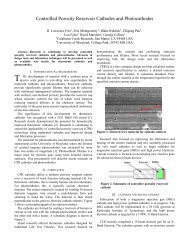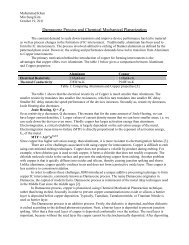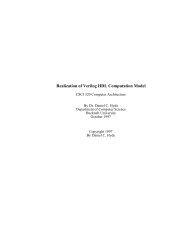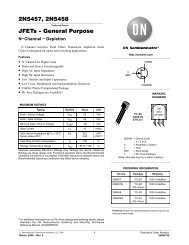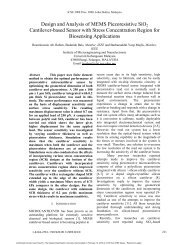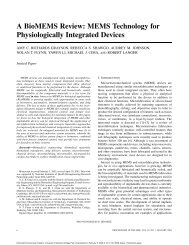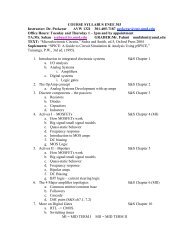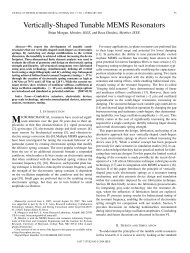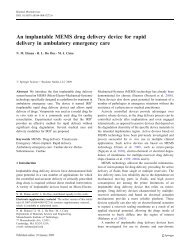Capacity-Equivocation Region of the Gaussian MIMO Wiretap ...
Capacity-Equivocation Region of the Gaussian MIMO Wiretap ...
Capacity-Equivocation Region of the Gaussian MIMO Wiretap ...
You also want an ePaper? Increase the reach of your titles
YUMPU automatically turns print PDFs into web optimized ePapers that Google loves.
5706 IEEE TRANSACTIONS ON INFORMATION THEORY, VOL. 58, NO. 9, SEPTEMBER 2012<br />
where is a <strong>Gaussian</strong> random vector with covariance matrix<br />
. Due to <strong>the</strong> first and second statements <strong>of</strong> Lemma 5, we<br />
have <strong>the</strong> following Markov chains:<br />
Next, we study <strong>the</strong> following optimization problem:<br />
(109)<br />
(110)<br />
(111)<br />
We note that since ,wehave<strong>the</strong>following<br />
lower bound for <strong>the</strong> optimization problem in (111):<br />
(112)<br />
We next obtain <strong>the</strong> maximum for (111). To this end, we introduce<br />
<strong>the</strong> following lemma which provides an explicit form for<br />
this optimization problem.<br />
Lemma 6: For ,wehave<br />
(113)<br />
The pro<strong>of</strong> <strong>of</strong> this lemma is given in Appendix V.<br />
Next we introduce <strong>the</strong> following extremal inequality from [3],<br />
which will be used in <strong>the</strong> solution <strong>of</strong> (113).<br />
Lemma 7 [3, Corollary 4]: Let be an arbitrarily correlated<br />
random vector, where has a covariance constraint<br />
and .Let be <strong>Gaussian</strong> random<br />
vectors with covariance matrices , respectively. They<br />
are independent <strong>of</strong> .Fur<strong>the</strong>rmore, satisfy<br />
. Assume that <strong>the</strong>re exists a covariance matrix such that<br />
and<br />
(114)<br />
where and is positive semidefinite matrix<br />
such that . Then, for any ,wehave<br />
(115)<br />
Now we use Lemma 7. To this end, we note that using (107)<br />
in (102), we get<br />
(116)<br />
In view <strong>of</strong> (116) and <strong>the</strong> fact that , Lemma 7 implies<br />
(117)<br />
We now consider <strong>the</strong> maximization in (113) as follows:<br />
(118)<br />
(119)<br />
(120)<br />
(121)<br />
(122)<br />
(123)<br />
(124)<br />
(125)<br />
(126)<br />
(127)<br />
(128)<br />
(129)<br />
(130)



